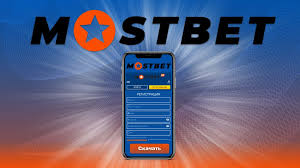
Spin to Win: Discover the Secrets of Luck and Chance
In an age dominated by technology and instant gratification, the concept of gaming continues to evolve in exciting ways. One of the most popular trends in this domain is the “Spin to Win” mechanic, which has captured the attention of gamers and casual players alike. This article will delve into the essence of Spin to Win games, exploring their appeal, mechanics, and the psychology behind their success. For a deeper insight on this trend, visit Spin to Win: Discover the Excitement of Mostbet Casino marcus-thuram.net.
The Allure of Spin to Win
Spin to Win games offer more than just the thrill of chance; they provide an experience that combines excitement with a sense of achievement. The spinning wheel mechanic is visually stimulating, creating a sense of anticipation as players await their outcome. This format is particularly appealing in online environments, where the bright colors and dynamic animations draw players in effectively.
Understanding the Mechanics
At its core, a Spin to Win game is built around a spinning wheel, segmented into various sections that represent different rewards or outcomes. Players engage with the game by spinning the wheel, with the eventual stop point determining their win. The randomness of the spin mirrors a fair game of chance, making it exciting and unpredictable.
Rewards and Incentives
Rewards in Spin to Win games can vary widely, ranging from free spins and discounts to tangible prizes. This diverse array of potential rewards adds complexity and increases player engagement. It encourages users to spin the wheel for a chance at prizes they deem valuable, thus enhancing their gaming experience. The inclusion of “,much can also boost participation and engagement as players may share their winnings on social media platforms, bragging about their luck and incentivizing others to join in.

The Psychological Appeal
The psychology behind Spin to Win games often leans heavily on the concept of variable rewards. Just as in gambling, the anticipation of winning something can create a rush that keeps players coming back for more. This is often referred to as the “reinforcement schedule” in psychological terms, where the uncertainty of when a reward will appear can lead to compulsive behavior.
FOMO: Fear of Missing Out
Spin to Win games often leverage the FOMO effect, capitalizing on players’ fears of missing out on special offers or limited-time rewards. This can create a sense of urgency, propelling individuals to participate even when they might not have initially intended to. The dynamic between limited-time opportunities and the spinning wheel mechanic enhances overall engagement and excitement.
Gamification: Enhancing the Experience
Many Spin to Win games incorporate various elements of gamification, such as levels, milestones, and challenges. For instance, players might need to complete a certain task or interact with a specific feature within the game to unlock higher rewards on the spin wheel. This additional layer of complexity can keep players engaged for longer periods and foster a sense of community among participants.
Spin to Win in Marketing
Businesses have recognized the power of Spin to Win games as effective marketing tools. They can serve to captivate customers while promoting brand loyalty. Promotions using a spin wheel garner excitement around new products, seasonal sales, or special events, often leading to higher conversion rates. Customers are more likely to engage with brands that provide them an interactive and fun form of participation.

Case Studies of Success
Several brands have implemented Spin to Win mechanics with great success. For example, online casinos frequently use this gimmick to entice new players with bonuses or spins on games. Similarly, e-commerce platforms often use spin wheels to encourage newsletter sign-ups, rewarding customers with discounts as incentives.
Examples of Spin to Win Implementations
1. **Online Retailers**: Many retailers have installed spin wheels on their websites that provide discounts based on what the wheel lands on. This becomes a fun interactive game that engages potential customers while incentivizing purchases.
2. **Mobile Applications**: Various mobile apps use spin wheels to encourage user interaction. For instance, fitness apps may offer spins for completing daily activities, rewarding users with points or premium features.
3. **Social Media Campaigns**: Brands frequently host spin-to-win contests on social media platforms, encouraging users to share the campaign for a chance to spin the wheel. This not only increases engagement but also expands brand visibility.
The Future of Spin to Win Games
As technology advances, the potential for Spin to Win games to evolve remains significant. With the proliferation of augmented reality (AR) and virtual reality (VR), future iterations could integrate immersive experiences that heighten engagement and thrill for users. Imagine a scenario where players are fully engaged in a 3D environment, spinning a virtual wheel that could lead them through an adventurous quest.
Conclusion
Spin to Win games represent a fascinating intersection of chance, psychology, and engagement. Their innate ability to draw players in, create excitement, and foster community engagement makes them uniquely effective in both gaming and marketing realms. As we embrace new technologies and consider how they shift user interactions, the Spin to Win experience will likely continue to adapt and grow: a timeless game of chance that isn’t going anywhere soon. So whether you’re a casual player or a dedicated gamer, the spinning wheel of fate is waiting for you to take a spin!
